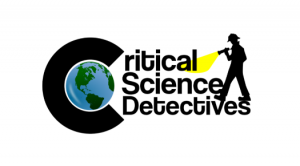
Introduction
The purpose of student’s investigations is to produce information that can be processed to become knowledge in order for them to be able to understand both general and specific aspects of their mission. Thus, an important part of their work is to organize and analyze the information they have found and the data they have produced.
Your role as a teacher
- The processing of the information they have searched and asked for will in most cases be analyzed and reflected upon instantly. When keeping a record of what, where and how they came across this information as well as their reflections upon it makes it possible for them to go back and see their process. Likewise, the teacher can get opportunities to follow their development as they proceed. The teacher’s role is to ask questions and challenge their reasoning, thus stimulating their critical thinking.
- When students do an interview the answers may be registered in written or in audio/video format. In the first case answers may have the characteristics of conclusions or just the essence of what has been said. This way to register an interview requires that the students are able to instantly interpret and write down what has been said. In the latter case, the words that have been said are saved and can be overheard again. In both cases the students have worked with and processed the information that has most relevance for their mission.
- As for the student’s inquiries with models, the situation is similar to reading and searching for information. The teacher’s role is to make sure that the students are able to understand and explain what the model expresses and how the model is relevant for their mission. This requires cognitive processing and will challenge and stimulate their reasoning and raise awareness of the model’s knowledge potential and relevance to their mission.
- Whether the students are producing data from an observation or an experiment, data must be organized and interpreted to become knowledge for the students. In the following section the work on two types of data is briefly described:
Samples that students bring back to the school must be studied in microscopes, measured, weighed and/or their physical and chemical features tested. This will most commonly result in rows/tables of numbers and in many cases it will be relevant to do calculations (mean, % etc.) and to convert these to info graphics. This will ease interpretation as it requires transformation from one mode to another and therefore it will help students to understand the nature of their findings.
Students can organize Pictorial data according to either spatial or temporal principles. In the first case, emphasis is on location and extension of phenomena whereas in the latter case emphasis is on how things develop over time. In some cases, of course, both principles are relevant, that is when a phenomenon develops or spreads in an area.
Before next step
In both cases when students bring back pictures or samples from fieldwork, the teacher’s role is to encourage them to do thorough work in order for them to get the most out of it. In some cases, it may be relevant to ask the students to revise their plan of action and to reconsider their methods, e.g. the number of pictures/samples, spatial distribution of where pictures/samples are taken etc. so that their conclusion will stand on more solid grounds. This is especially important if they are to engage with the local community and in all cases, it will provide them with a better understanding of the nature of science.
You can read more in the guide